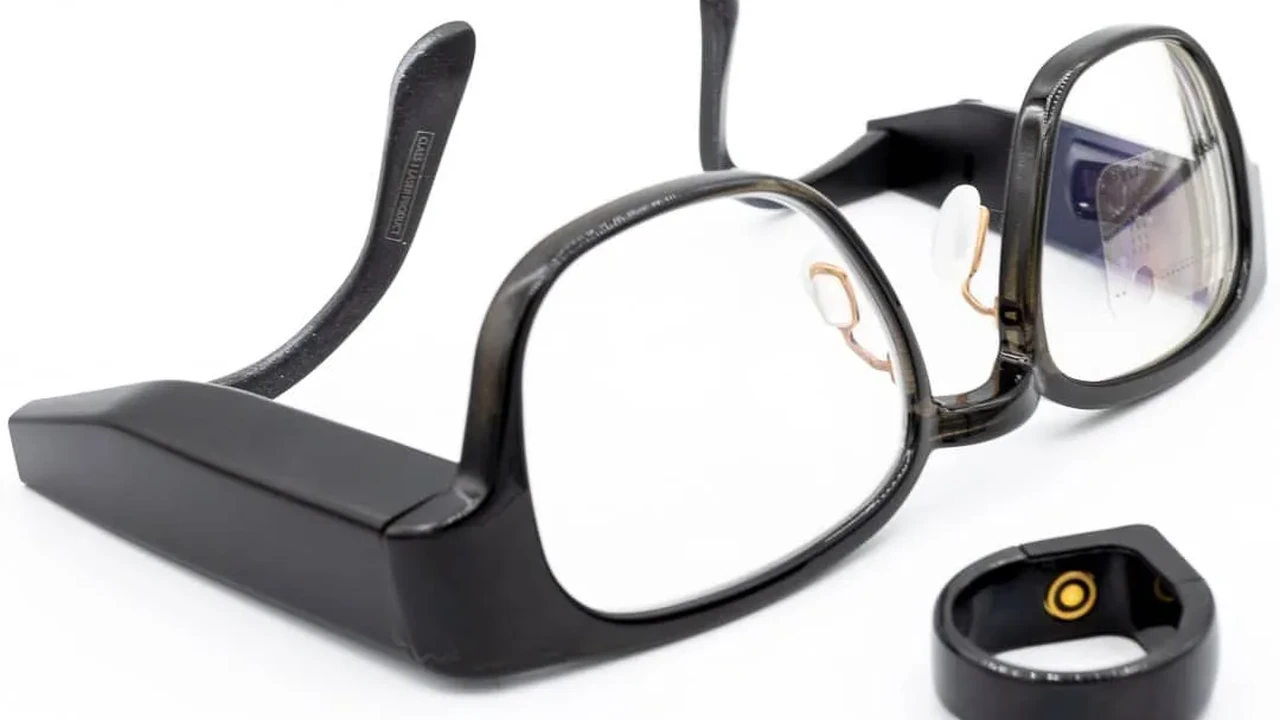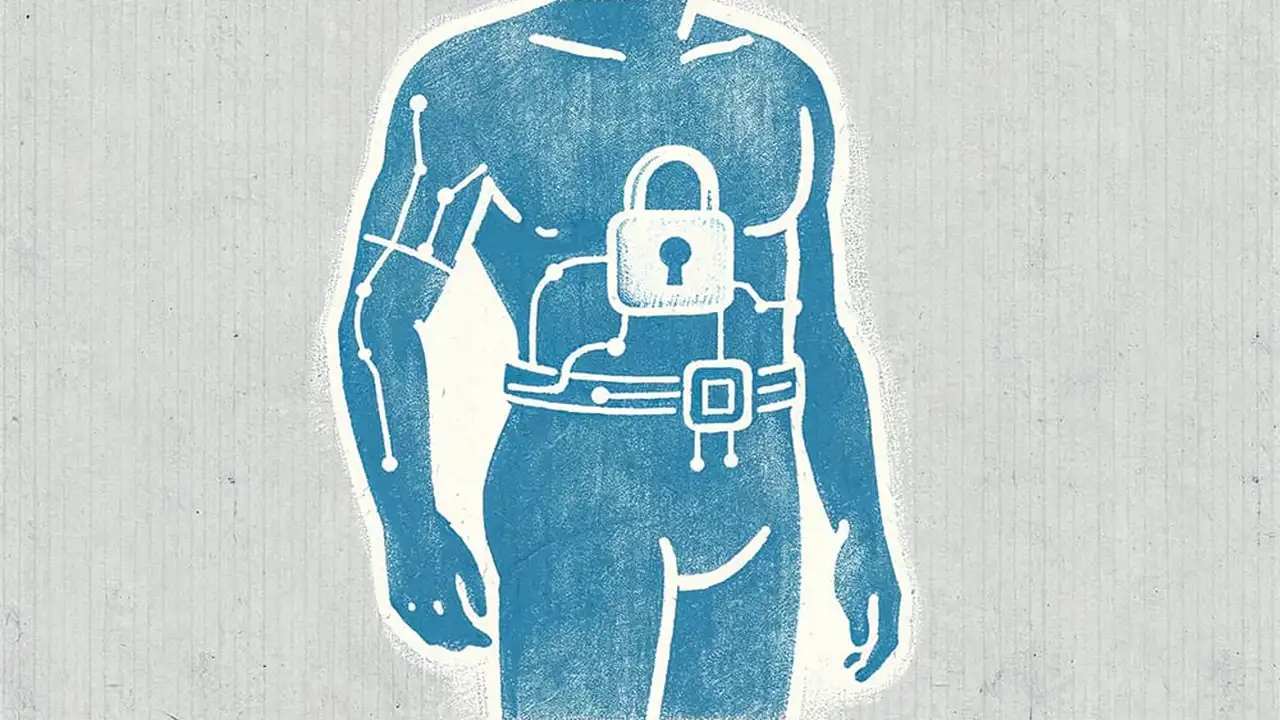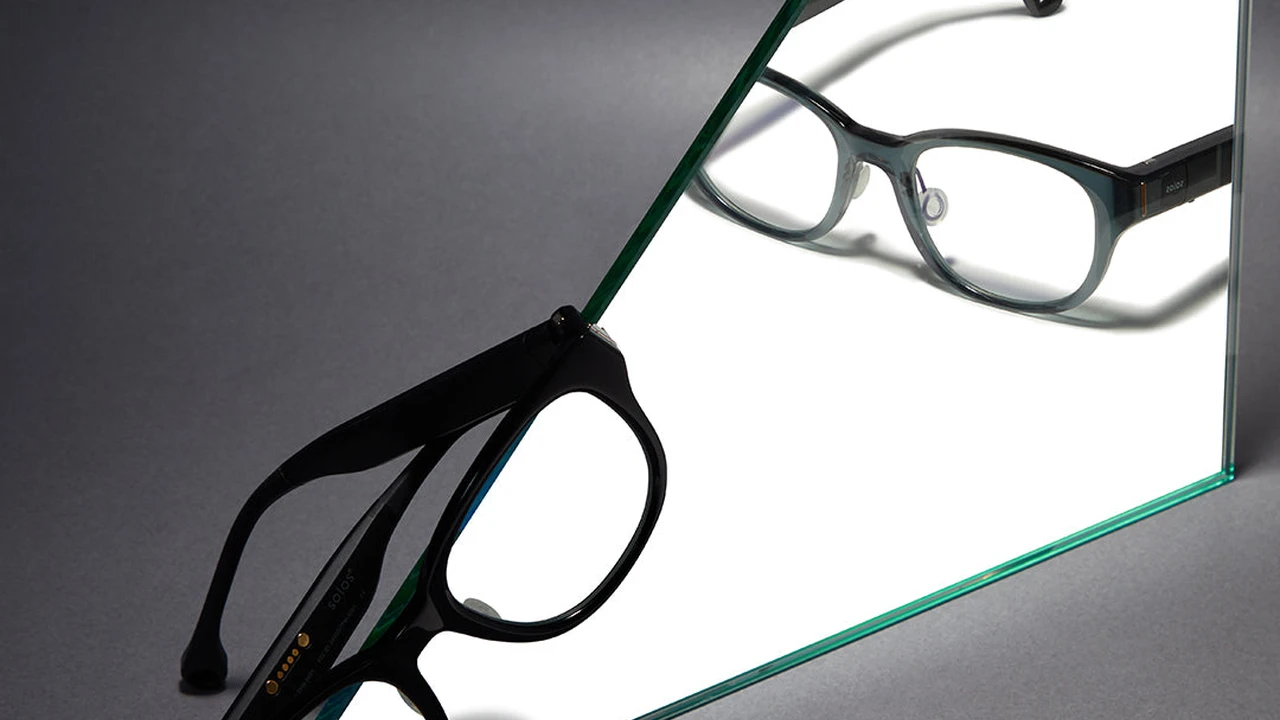Focals by North Review Smart Glasses for Everyday
A review of Focals by North smart glasses, focusing on their design and integration into daily life.

Focals by North Review Smart Glasses for Everyday
Introduction to Focals by North The Everyday Smart Glasses
Hey there, tech enthusiasts and fashion-forward individuals! Today, we're diving deep into a pair of smart glasses that truly aimed to blend seamlessly into your daily life: Focals by North. Unlike many of their bulkier, more overtly 'techy' counterparts, Focals were designed with subtlety and style at their core. The idea was simple yet revolutionary: smart glasses that look and feel like regular glasses, but with a hidden superpower. They promised to deliver essential information right into your line of sight without being distracting or cumbersome. Think of it as having a personal assistant discreetly whispering updates into your eye, rather than shouting them from a screen. This review will explore what made Focals unique, how they integrated into daily routines, their key features, and why they captured the attention of many looking for a more understated smart eyewear experience. We'll also touch upon their journey, from their initial launch to their eventual acquisition by Google, and what that meant for their legacy in the smart glasses market.
Design and Comfort The Unsung Heroes of Focals by North
When it comes to smart glasses, design and comfort are often overlooked in favor of raw technological prowess. However, Focals by North truly excelled in these areas, making them stand out in a crowded market. Their primary goal was to create smart glasses that people would actually want to wear all day, every day, without feeling self-conscious or uncomfortable. And they largely succeeded. Focals looked, at first glance, like a stylish pair of prescription or non-prescription eyeglasses. They came in various classic frame styles and colors, allowing users to choose a look that suited their personal aesthetic. This was a stark contrast to many early smart glasses that often resembled futuristic goggles or bulky head-mounted displays. The lightweight construction was another significant advantage. Made from high-quality materials, Focals were designed to be worn for extended periods without causing discomfort or pressure points. This was crucial for their 'everyday' appeal. The weight distribution was meticulously engineered to ensure a balanced feel, preventing them from sliding down your nose or feeling heavy on your ears. For those who wear prescription glasses, Focals offered the option to integrate custom prescription lenses directly into the frames, further enhancing their practicality and seamless integration into daily life. This attention to detail in design and comfort was a game-changer, proving that smart glasses didn't have to sacrifice style for functionality. It allowed users to embrace the technology without compromising their personal style or feeling like they were wearing a gadget.
Key Features and Functionality What Focals by North Offered
Focals by North weren't about overwhelming you with a multitude of features; instead, they focused on delivering essential information in a subtle and non-intrusive way. The core of their functionality revolved around a tiny, almost invisible projector that beamed information directly onto the right lens, appearing as a crisp, clear display only visible to the wearer. This 'retinal projection' technology was truly innovative and contributed significantly to their discreet design. So, what kind of information could you see? Focals were designed to keep you connected without constantly pulling out your phone. They displayed notifications for text messages, calendar alerts, and turn-by-turn navigation. Imagine walking down the street and seeing your next turn subtly appear in your peripheral vision, or getting a gentle reminder about your next meeting without a jarring buzz from your pocket. They also offered weather updates, Uber arrival times, and even allowed you to respond to messages using a small, discreet ring controller called the 'Loop.' This ring, worn on your finger, had a joystick and a button, allowing for intuitive navigation and interaction with the glasses' interface. It was a clever solution for hands-free control, further enhancing the seamless experience. For music lovers, Focals could control music playback from your connected smartphone, allowing you to skip tracks or adjust volume with a flick of your finger. While they didn't have a built-in camera like some other smart glasses, their focus was clearly on information delivery and subtle interaction, making them ideal for those who wanted smart features without the overt 'recording' capabilities. The integration with popular apps and services was also a strong point, ensuring that the information displayed was relevant and useful for daily tasks. This minimalist approach to features, combined with their elegant delivery, made Focals a truly unique proposition in the smart glasses market.
The 'Loop' Controller and User Experience Seamless Interaction
One of the most ingenious aspects of Focals by North was their accompanying 'Loop' controller. This small, discreet ring, worn on your index finger, was the primary way users interacted with the smart glasses. It was a brilliant design choice that further emphasized Focals' commitment to subtlety and ease of use. The Loop featured a tiny joystick and a single button, allowing for intuitive navigation through the glasses' interface. With a flick of your thumb on the joystick, you could scroll through notifications, check the weather, or advance through navigation steps. A press of the button would select an item or dismiss a notification. This tactile feedback, combined with the visual cues on the lens, created a remarkably seamless and natural user experience. Unlike voice commands, which can sometimes feel awkward in public, or touchpads on the temple, which can be imprecise, the Loop offered a private and precise method of control. It was designed to be worn comfortably all day, and its small size meant it was barely noticeable. The Loop also played a crucial role in the initial setup and calibration of the Focals. North had a unique fitting process where users would visit a 'showroom' or use a home-fitting kit to ensure the retinal projection was perfectly aligned with their eye. This personalized calibration, combined with the intuitive Loop controller, ensured that the information displayed was always clear and easy to read, without any distortion or eye strain. The overall user experience with Focals was characterized by its effortlessness. The information appeared when needed, the interaction was smooth and unobtrusive, and the glasses themselves felt like a natural extension of your vision. This focus on a truly integrated and user-friendly experience set Focals apart from many of their competitors, who often struggled with clunky interfaces or uncomfortable controls. It demonstrated that smart glasses could be more than just a gadget; they could be a truly helpful and integrated part of your daily life.
Battery Life and Charging Keeping Focals Powered Up
For any wearable device, especially one designed for all-day use, battery life is a critical factor. Focals by North aimed to provide a full day's worth of power, ensuring that users wouldn't be constantly searching for a charger. On average, Focals offered about 15-18 hours of battery life on a single charge, which was quite respectable for a device with a continuous display. This meant that for most users, they could put them on in the morning and wear them until they went to bed without needing a midday top-up. The charging solution for Focals was also quite innovative and convenient. They came with a stylish charging case that doubled as a protective carrying case. To charge the glasses, you simply placed them into the case, and they would begin charging wirelessly. The case itself had its own internal battery, allowing you to charge your Focals on the go, even when you weren't near a power outlet. This was a thoughtful design choice that enhanced the portability and practicality of the glasses. The Loop controller also had its own small battery and was charged by placing it into a dedicated slot within the same charging case. This integrated charging system meant you only had one accessory to worry about for keeping both your glasses and controller powered. While 15-18 hours might not sound like a multi-day battery life, for a device that was constantly projecting information and connected to your phone, it was a solid performance that met the demands of an average day. The convenient charging case further mitigated any concerns about running out of power, making Focals a reliable companion for daily wear. This focus on practical battery life and a user-friendly charging solution was another testament to North's understanding of what makes a wearable truly 'everyday' ready.
Pricing and Availability The Journey of Focals by North
When Focals by North first launched, their pricing reflected the innovative technology and bespoke fitting process involved. Initially, they were priced at around $999 USD, which put them in the premium segment of the smart glasses market. This price point included the custom fitting, the glasses themselves, and the Loop controller. For those requiring prescription lenses, there was an additional cost, typically ranging from $200 to $300, depending on the complexity of the prescription. This initial price was a significant investment for many consumers, but it was justified by the unique retinal projection technology, the high-quality design, and the personalized fitting experience. North later adjusted the price to a more accessible $599 USD, likely in an effort to broaden their appeal and reach a wider audience. This price drop made them much more competitive with other high-end smart wearables. Availability was initially limited to North's own showrooms in select cities, such as Toronto and Brooklyn, where the precise fitting process could be carried out. They later expanded to offer a home-fitting kit, allowing customers to order and fit their Focals from anywhere. However, the journey of Focals took a significant turn in June 2020 when North was acquired by Google. Following the acquisition, Google announced that Focals 1.0 would no longer be sold, and they would not be releasing a Focals 2.0. This marked the end of Focals as a standalone product line. While disappointing for fans of the glasses, the acquisition meant that North's innovative technology and talented team would be integrated into Google's broader hardware efforts, potentially influencing future Google smart eyewear products. So, while you can no longer purchase new Focals by North, their legacy lives on through the impact they had on smart glasses design and user experience, proving that subtlety and style could indeed coexist with cutting-edge technology. Their pricing and availability journey highlights the challenges and evolution of bringing truly innovative wearable tech to market.
Comparison with Other Smart Glasses Focals vs The Competition
To truly appreciate Focals by North, it's helpful to compare them with some of their contemporaries and other notable smart glasses in the market. Focals carved out a unique niche by prioritizing discreet design and seamless integration into daily life, a philosophy that often contrasted with other offerings. Let's look at a few key comparisons:
Focals by North vs Google Glass Enterprise Edition 2
Google Glass, particularly its Enterprise Edition 2, was primarily designed for industrial and professional use cases. It featured a more prominent prism display positioned above the eye, making it instantly recognizable as a piece of technology. Its focus was on hands-free access to information, remote assistance, and workflow optimization in settings like manufacturing and logistics. In contrast, Focals were built for the everyday consumer, emphasizing style and subtle notifications. While Google Glass was about maximizing information density for specific tasks, Focals aimed for minimal, glanceable information for general use. The price points also differed significantly, with Google Glass EE2 being a B2B product with a higher price tag, whereas Focals aimed for a consumer market, albeit a premium one.
Focals by North vs Ray-Ban Stories
Ray-Ban Stories, developed in partnership with Meta (Facebook), represent a different approach to 'smart' glasses. Their primary features are integrated cameras for hands-free photo and video capture, and open-ear audio for listening to music and taking calls. They look almost identical to classic Ray-Ban Wayfarers, making them incredibly discreet. While Focals focused on displaying information to the wearer, Ray-Ban Stories focused on capturing and sharing moments from the wearer's perspective. Focals had no camera, and Ray-Ban Stories had no display. This highlights the diverse interpretations of 'smart' in eyewear. Ray-Ban Stories were also more affordably priced, starting around $299, making them a more accessible entry point into smart eyewear, albeit with different functionalities.
Focals by North vs Amazon Echo Frames
Amazon Echo Frames are essentially Alexa-enabled audio glasses. They integrate Amazon's voice assistant, allowing users to make calls, listen to music, and access Alexa's features through bone-conduction audio, all while looking like regular glasses. Like Ray-Ban Stories, they lack a visual display. Their strength lies in their audio capabilities and seamless integration with the Alexa ecosystem. Focals, on the other hand, prioritized the visual display of information. While both aimed for a discreet form factor, their core functionalities were distinct: Focals for visual information, Echo Frames for audio interaction. Echo Frames were also more competitively priced, often around $250-$300, positioning them as an audio-first smart eyewear option.
Focals by North vs Vuzix Smart Glasses (e.g., Vuzix Blade)
Vuzix offers a range of smart glasses, with models like the Vuzix Blade being more consumer-oriented than their industrial counterparts. The Vuzix Blade features a full-color waveguide display that projects information into the wearer's field of view, similar in concept to Focals but often with a larger, more prominent display area. Vuzix Blade also includes a camera and is more feature-rich, offering a broader range of applications. While Vuzix Blade aimed for a balance of features and form factor, Focals leaned heavily into minimalist design and subtle information delivery. Vuzix products generally sit at a higher price point than Focals did, reflecting their broader feature set and enterprise capabilities.
In summary, Focals by North stood out by offering a truly unique blend of subtle design, comfortable wear, and discreet information delivery. While other smart glasses focused on cameras, audio, or industrial applications, Focals aimed to be the everyday companion that simply made your digital life a little more convenient, without drawing attention to itself. Their focus on the 'retinal projection' and the 'Loop' controller created a user experience that was arguably more seamless and less intrusive than many of their competitors, making them a beloved choice for those who valued subtlety and style in their tech.
The Legacy of Focals by North Its Impact on Smart Glasses
Even though Focals by North are no longer available for purchase, their impact on the smart glasses industry is undeniable. They left a significant legacy, particularly in demonstrating what's possible when design and user experience are prioritized alongside technological innovation. Here's how Focals influenced the smart glasses landscape:
Pioneering Discreet Design and Form Factor
Before Focals, many smart glasses were bulky, futuristic, or overtly 'techy.' Focals proved that smart eyewear could look and feel like regular glasses. Their commitment to a subtle, stylish form factor set a new standard and challenged other manufacturers to consider aesthetics and wearability more seriously. This emphasis on blending in, rather than standing out, resonated with a large segment of consumers who were hesitant to adopt more conspicuous smart glasses.
Innovation in Display Technology
The 'retinal projection' technology used in Focals was truly groundbreaking. By beaming a crisp, clear image directly onto the wearer's retina, they achieved a display that was virtually invisible to others and incredibly personal to the user. This approach minimized the visual distraction often associated with head-up displays and offered a more natural viewing experience. While other companies use different display methods, Focals pushed the boundaries of how information could be subtly presented in smart eyewear.
Focus on Essential Information and Non-Intrusive Notifications
Focals didn't try to be a smartphone on your face. Instead, they focused on delivering only the most essential, glanceable information: notifications, navigation, weather. This minimalist approach to features was a refreshing change from the 'more is better' mentality often seen in tech. It highlighted the value of providing relevant information at the right time, without overwhelming the user or creating unnecessary distractions. This philosophy has influenced subsequent smart eyewear designs that aim for a more focused and less intrusive user experience.
The 'Loop' Controller A Benchmark for Intuitive Interaction
The Loop controller was a masterclass in intuitive wearable interaction. Its discreet design and precise control offered a seamless way to navigate the glasses' interface without awkward gestures or loud voice commands. It demonstrated that physical, tactile controls could be incredibly effective and user-friendly in a smart eyewear context. This innovative input method provided a blueprint for how users could interact with smart glasses in a natural and unobtrusive manner.
Raising the Bar for Comfort and Customization
North's meticulous fitting process and the option for prescription lenses underscored the importance of comfort and personalization in smart glasses. They understood that for a device to be worn all day, it had to fit perfectly and feel natural. This attention to individual fit and the integration of prescription needs set a high bar for the industry, emphasizing that smart glasses should adapt to the user, not the other way around.
The Google Acquisition A Testament to Their Innovation
The acquisition of North by Google was a significant validation of Focals' technology and the talent behind them. While it meant the end of the Focals product line, it also signified that Google recognized the value of North's approach to smart eyewear. It's highly probable that North's innovations, particularly in display technology and discreet design, will influence future Google smart glasses or augmented reality projects, ensuring that the spirit of Focals lives on in new forms. In essence, Focals by North were more than just a product; they were a vision for how smart glasses could truly integrate into our lives, subtly enhancing our daily experiences without compromising on style or comfort. Their legacy continues to shape the conversation around the future of wearable technology, proving that sometimes, less truly is more.
:max_bytes(150000):strip_icc()/277019-baked-pork-chops-with-cream-of-mushroom-soup-DDMFS-beauty-4x3-BG-7505-5762b731cf30447d9cbbbbbf387beafa.jpg)






